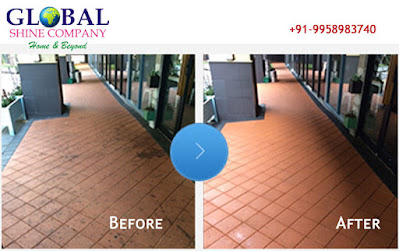The
journey of anaesthesia, from its infancy in the 19th century to the present,
provides an illustrative timeline of the ever-evolving realm of medical
science. A unique blend of technique, science, and machinery, the field of
anaesthesia has continually adapted to meet the dynamic needs of surgery and
patient care. The transition from the Boyles Apparatus to the advanced GI Anaesthesia Workstation exemplifies this remarkable evolution.
Boyles Apparatus: The Humble Beginnings
1917
heralded a new era in anaesthetic delivery with the introduction of the Boyle's
machine by Sir Henry Boyle. Designed for the primary administration of nitrous
oxide and oxygen, it incorporated:
Ø Flow meters: A tool for measuring gas flow.
Ø Vaporizers: Transforming liquid anesthetics into vapour form.
Ø Pressure gauges: Ensuring optimal internal pressure.
Embracing Halothane and Ensuing Technological Strides
The
1950s witnessed the advent of halothane, a potent inhalation agent. The
necessity for precise concentration control ushered in sophisticated vaporizers
and advanced flow regulators, marking the first major shift from the
traditional Boyle's model.
Era of Safety and Enhanced Monitoring
Rising
malpractice incidents during the 1970s and 1980s spurred industry-wide
introspection. In response, a slew of safety mechanisms were integrated:
Ø Pin Index Safety System (PISS): A foolproof mechanism to prevent cylinder interchange.
Ø Oxygen Failure Protection Devices: An assurance against oxygen supply disruption.
Ø Oxygen Concentration Monitors: Guaranteeing accurate oxygen delivery.
As
the world ushered in the digital age in the late 20th century, so too did
anaesthesia machines. The inclusion of microprocessors brought about:
Ø Advanced monitoring capacities such as end-tidal CO2 and agent-specific oversight.
Ø Proactive alert systems.
Ø Enhanced digital displays, ensuring the precision of readings and waveforms.
 |
| GI Anaesthesia Workstation |
Modern medicine's requirements have given rise to the sophisticated GI Anaesthesia Workstation:
Ø Advanced Ventilatory Modes: Catering to diverse patient needs, ranging from neonates to the elderly.
Ø Integrated Drug Delivery Systems: Precision in intravenous agent administration.
Ø Touchscreen Controls: Facilitating user-friendly navigation and fine-tuning.
Ø Electronic Health Record (EHR) Integration: Enabling seamless patient data documentation and coordination.
Furthermore, the ergonomic designs of these workstations enhance user comfort, and their modularity ensures adaptability to different clinical scenarios.
The Road Ahead: AI, Automation, and Beyond
Emerging
technological trends point towards an exciting future for anaesthesia:
Ø Artificial Intelligence: Predictive analytics could enable preemptive measures, forecasting patient responses based on a plethora of data.
Ø Automation: Self-adjusting drug delivery systems can be revolutionized with real-time feedback mechanisms, enhancing patient safety and outcomes.
Ø Integration with Robotics: In procedures requiring robotic assistance, the anaesthesia workstation can be synchronized to ensure coordinated care.
Environmental and Sustainability Considerations
Modern
anaesthesia workstations, including the GI variant, also consider the
environmental footprint. There's an increasing emphasis on:
Ø Low Emission Systems: Reducing the release of greenhouse gases into the atmosphere.
Ø Recycling Mechanisms: Ensuring efficient use of gases and minimal wastage.
Ø Eco-friendly Materials: From construction to disposal, the focus is on minimizing environmental harm.
The growth trajectory of anaesthesia machines from the foundational Boyles Apparatus to the high-tech GI Anaesthesia Workstation is not just a tale of technological evolution but a testament to the medical fraternity's unwavering commitment to enhancing patient care and surgical outcomes. With rapid technological advancements and a greater emphasis on sustainability, the future of anaesthesia is promising, heralding an era where precision, safety, and environmental responsibility converge.
 |
| GI Anaesthesia Workstation |
Modern anaesthesia machines have evolved significantly over the years, integrating a plethora of features that prioritize patient safety, enhance operational efficiency, and provide greater control to the anaesthetist. Here's an overview of the key features commonly found in these advanced apparatuses:
Ø Digital Interface and Touchscreen Controls: Most modern machines have intuitive touchscreen interfaces, allowing easy adjustments, monitoring, and access to essential information about the patient and the procedure.
Ø Advanced Ventilation Modes: These machines can accommodate a variety of ventilation strategies, allowing tailored approaches for neonates, pediatric, adult, or high-risk patients.
Ø Integrated Workstations: Modern anaesthesia machines are designed as all-in-one workstations that combine gas delivery, vaporization, patient monitoring, and ventilatory support.
Ø Electronic Gas Mixing: This provides precise control over the concentration of inhaled anesthetic agents, ensuring a consistent mix of gases.
Ø Agent-specific Vaporizers: They allow for accurate delivery of specific volatile anaesthetic agents, ensuring the desired concentration is achieved.
Ø End-tidal CO2 Monitoring: This essential feature monitors the concentration of carbon dioxide in exhaled breath, providing insights into the patient's ventilatory status.
Ø Anaesthesia Information Management Systems (AIMS): These systems facilitate digital documentation, allowing seamless integration with hospital electronic health records, leading to improved patient care coordination.
Ø Integrated Drug Delivery Systems: Some advanced machines can integrate with syringe pumps or other intravenous drug delivery mechanisms, ensuring accurate and continuous drug administration.
Ø Oxygen Concentration and Ratio Controllers: They ensure that a safe level of oxygen is always maintained, reducing the risk of hypoxia.
Safety Features
Ø Pin Index Safety System (PISS): Prevents the accidental connection of the wrong gas cylinder.
In summary, modern anaesthesia machines have transformed from mere gas delivery devices into comprehensive workstations that prioritize patient safety, provide advanced monitoring capabilities, and offer seamless integration with other medical systems. The integration of technology and medical expertise in these devices ensures that patients receive the best care during procedures that require anaesthesia.
